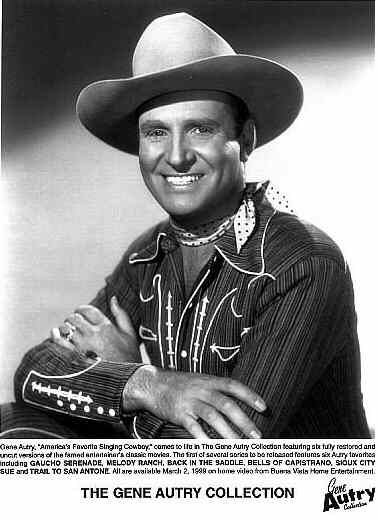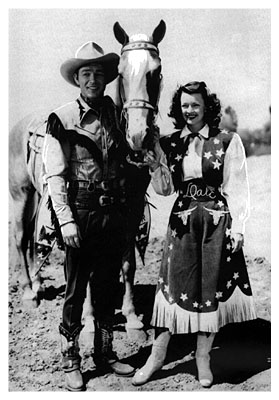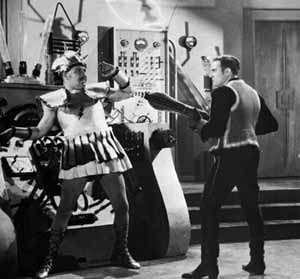Episode 3: Ballads and Boots

 | My little boy said, “Daddy, who’s Gene Autry?” His old movie was coming on TV And I said, “Well let me tell you about him son…” “Why he could ride a horse, play his guitar, and sing, all at the same time And I was riding right along there beside him On that broomstick pony of mine And you know his pistol never ran out of bullets When the bad guys had to be stopped? And somehow, his bullets never drew any blood But the bad guys dropped when he shot. Yeah, old Gene was the image of justice And goodness and purity… And you know the way he rescued the rancher’s daughter It sent a thrill right up the aisle And the ending would always send us home With a good, victorious smile…
|
| A romanticized hero from a time gone by, the Singing Cowboy personifies our vision of the good guy in the white hat. Whether battling cattle rustlers, Nazi spies, or evil overlords from another planet, Our Hero could be counted on to arrive in the nick of time.The recipe for these films was simple. Take a heroic good guy riding a fiery horse, add a comic side-kick, mix with a pretty, spunky girl and a devious villain, stir in a soupçon of song and patriotism, and voila! Box office magic! It didn’t matter if the story took place in the past or the present; it only mattered that in the end good would triumph over evil. Appealing to both children and adults, singing cowboy pictures had their heyday in the 30’s and 40’s. Gene Autry with
Of course, there’s one rule he neglected to include:
| |
Articles: The Twisted Hollywood Western
- Episode 1: Spies in Spurs
- Episode 2: Mystics and Mayhem
- Episode 3: Ballads and Boots
- Episode 4: Idiots and Indians
- Epilogue: Costumes and Cap Guns (PHOTOS FROM THE EVENT!)
- Appendix: How to get to Roaring Camp
- image of the original flyer (290K) (obsolete #s and addresses elided)


 Smiley Burnett, and Roy Rogers, Dale Evans and Gabby Hayes were some of the most bankable stars around. It’s difficult to believe now, but in 1940, Gene Autry was the fourth most popular movie star in America — right behind Clark Gable! Even that most urbane sophisticate, Cole Porter, got in on the action, penning “Don’t Fence Me In,” a song recorded by nearly every singing cowboy that ever set foot on a soundstage.
Smiley Burnett, and Roy Rogers, Dale Evans and Gabby Hayes were some of the most bankable stars around. It’s difficult to believe now, but in 1940, Gene Autry was the fourth most popular movie star in America — right behind Clark Gable! Even that most urbane sophisticate, Cole Porter, got in on the action, penning “Don’t Fence Me In,” a song recorded by nearly every singing cowboy that ever set foot on a soundstage.